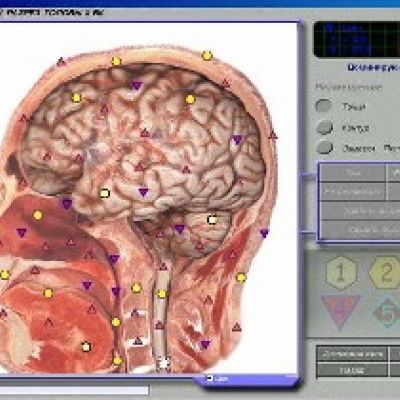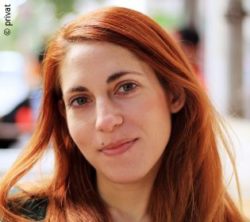 Geachte Heer <naam verwijderd i.v.m. privacy>,
Geachte Heer <naam verwijderd i.v.m. privacy>,
Wederom dank voor uw snelle en uitgebreide antwoord. Dit moet u aanzienlijk veel tijd hebben gekost.
In het onderstaande zal ik eerst puntsgewijs reageren op de door u gegeven antwoorden op de door mij per email gestelde vragen. Daarna zal ik kort mijn bevindingen geven over de door u aangeleverde informatie m.b.t. het OBERON-systeem. Tenslotte zal ik mijn visie t.a.v. de werking van het systeem geven en afsluiten met mijn advies aan <naam verwijderd>.
In uw email van 13 december geeft u aan dat er twee wetenschappelijke methoden bestaan, de inductieve methode en de deductieve methode. Dit is juist, maar nog niet volledig. De wetenschap streeft naar waarheidsvinding en gebruikt daarvoor methodieken, zoals hypothesen, op de hypothesen gebaseerde voorspellingen als logische consequenties, en experimenten of empirische observaties. Belangrijke uitgangspunten hierbij zijn: falsificeerbaarheid, verifieerbaarheid, testbaarheid en reproduceerbaarheid. In dit specifieke geval heeft u niet alleen te maken met mij als wetenschapper, maar bovenal als elektrotechnisch ingenieur. Uw systeem maakt gebruik van de vruchten van de elektrotechniek en de informatica en hiervoor moeten bovenstaande wetenschappelijke begrippen dus sowieso gelden. Het is echter mijn overtuiging dat alle natuur- en bovennatuurlijke verschijnselen op wetenschappelijke wijze onderzocht dienen te worden om een beter begrip van deze verschijnselen te ontwikkelen en om betere technologie te maken waar de mens en onze planeet wel bij varen.
In uw email, maar ook in uw presentatie, gebruikt u de term “lineair” als argument om aan te geven in hoeverre de klassieke wetenschap tekort schiet om uw systeem te begrijpen. Uw systeem is immers niet lineair. Nu ben ik toevallig uitermate bekend met het begrip lineariteit. Ik doceer aan de Technische Universiteit Delft zowel lineaire schakelingen als niet-lineaire schakelingen. Ik ben bovendien uitvinder van de dynamisch-translineaire schakelingen en ontwerp vooral niet-lineaire geïntegreerde schakelingen, ook wel bekend als “chips”, waarover later meer. De manier hoe u “niet-lineair” hanteert is op zich niet verklarend en m.i. uitsluitend bedoeld om de toehoorder ervan af te brengen om verdere vragen te stellen.
U geeft aan dat het OBERON-systeem van Metavital medisch gecertificeerd is. Dit is slechts ten dele juist. Het OBERON-systeem staat (mogelijk) geregistreerd in de categorie van medische producten. Dit betekent echter niet dat het een doelmatig (voor de patiënt zinvol) en veilig systeem betreft. “Medisch gecertificeerd” wordt vaak ten onrechte aangevoerd als een bewijs van kwaliteit.
Ik vroeg u naar de reden waarom de volgende gegevens van de cliënt noodzakelijk zijn om in het OBERON-systeem in te voeren: naam en voornaam, huisadres, geboortedatum en eventueel de bloedgroep. Uw antwoord hierop is dat dit unieke gegevens zijn en dat deze nodig zijn om een precieze verbinding met de cliënt te maken. Dit acht ik echter onwaarschijnlijk. De naam is door de ouders gegeven en is door huwelijk of naamsverandering van de cliënt nadien veranderbaar. Het adres is een keuze van de cliënt en/of diens gezin. De geboortedatum en bloedgroep zijn waarschijnlijk de enige gegevens die niet gekozen zijn. De geboortedatum en het geslacht, af te leiden van de naam, van de cliënt geven wel een indicatie van de waarschijnlijkheid dat bepaalde aandoeningen zich kunnen voordoen. Colitis en het eraan verwante prikkelbare darmsyndroom komen bijvoorbeeld bij mensen ouder dan 65 jaar, zoals de vrouw die tijdens de demonstratie bemeten werd, twee keer zoveel voor als bij mensen tussen de 25 en 44 jaar.
Dan de “scalaire golven”. Scalaire golven zijn golven die worden beschreven volgens de Wetten van Maxwell, genoemd naar de wetenschapper James Clark Maxwell (1831-1871). Deze wetten beschrijven de fenomenen zoals ze later ook proefondervindelijk zijn waargenomen door de eveneens wetenschapper Heinrich Hertz (1857-1894). Ten aanzien van het bestaan van scalaire golven wordt echter een belangrijke fout gemaakt. De wetten van Maxwell beschrijven elektromagnetische golven op een wiskundige manier. De beschrijving biedt echter nog een andere mogelijkheid van golven, namelijk één waarvan de wiskundige oplossing is dat zowel het elektrische veld (het E-veld) als het magnetische veld (het H-veld) nul zijn. Dit betekent echter dat de vector van Poynting, welke gelijk is aan het wiskundige “uit-product” van het E-veld en het H-veld gelijk is aan nul en er dus geen energie overgedragen wordt. Echter, dat een wiskundige vergelijking die een bestaand fenomeen beschrijft ook een andere oplossing beschrijft is geen bewijs van het daadwerkelijk bestaan van deze andere oplossing. De scalaire velden worden in de wetenschappelijke literatuur nauwelijks beschreven. Een beschrijving die ik aantrof in de (vrijgegeven) dossiers van de Amerikaanse CIA (in: https://www.cia.gov/library/readingroom/docs/CIA-RDP96-00792R000500240001-6.pdf), die overigens perfect de Maxwell-vergelijkingen interpreteert, was: “Hun bestaan is niet bewezen en als ze bestaan dan is hun energiebron niet duidelijk om dergelijke golven te onderhouden”. Met andere woorden, scalaire golven lijken niet te bestaan en zeker niet op te wekken. Mijn inziens ondermijnt dit argument de geloofwaardigheid van iedere vorm van technologie gebaseerd op scalaire golven, inclusief het OBERON-systeem van Metavital.
Dan ten aanzien van frequenties en de energie. U heeft mij geen antwoord kunnen geven op welke frequenties het systeem werkt en welke hoeveelheden energie er gemeten worden. U stelt dat frequentiepatronen veel complexer zijn dan een normale frequentie. Dit is juist, maar alle frequentiepatronen kunnen geanalyseerd worden met de zogenaamde Fourier-analyse (vernoemd naar Joseph Fourier, 1768-1830) en samengesteld worden met Fourier-synthese, technieken die in de wetenschappelijke en technologische domeinen bekend zijn en worden toegepast in de door u gebruikte computer, draadloze communicatie en elektrische energievoorziening.
In antwoord op mijn vraag over het aantal meetpunten gaf u aan dat een meting ca. 70 biljoen meetpunten betreft. Verderop in uw email gaf u aan 255 dB (decibel) aan energieniveaus te kunnen meten. Over het aantal frequenties was u minder specifiek. Het getal van 4,2 suggereert echter een nauwkeurigheid van 1 decimaal t.o.v. de absolute waarde van 4,2 en dus minstens 42 verschillende frequenties. Deze kunnen binair gecodeerd worden als ^2log(42) = 6 bits (eenheden van binaire informatie). 255 dB is een factor 10^25,5 = 3.16e+25 en kan binair gecodeerd worden als ^2log(3.16e+25) = 43 bits. De totale hoeveelheid data komt hiermee uit op 43 x 6 x 7e+13 = 1.8e+16 bits. Gebruiken we vervolgens de definitie van “kanaalcapaciteit” (Claude Shannon, 1916-2011), dan betekent dat het overzenden van 1.8e+16 bits over een gewone telefoonlijn (zoals ook in uw email als mogelijkheid benoemd) met een maximale overdraagsnelheid van 56 kilo-bit per seconde 321 miljard seconden duurt, ofwel meer dan 10.000 jaar (!). Zelfs via de door u (op uw website) gewantrouwde 5G-netwerken, met een huidige gemiddelde datasnelheid van 100 mega-bit per seconde is de duur van het verzenden van deze informatie 180000000 seconden, ofwel nog steeds een krappe 8 jaar.
Op mijn vraag van hoe u frequenties overzet op water, metaal of chips, verklaart u dat u hiervoor een resonantiekamer gebruikt. Resonantie is echter de voorkeur van een ruimte of component voor een bepaalde (grond-) frequentie en diens “hogere harmonischen”. Dit zijn (veelal oneven, dus 3x, 5x, 7x, etc.) veelvouden van deze grond-frequentie. Het is dus onmogelijk om een heel frequentiespectrum in een resonantiekamer over te zetten op iets anders.
Chips zijn inderdaad meerdere lagen boven elkaar, maar niet per se van metaal, veelal eerder van halfgeleider-materiaal, waarvan silicium het bekendste voorbeeld is. Chips worden ook geïntegreerde schakelingen genoemd en zijn, toevallig, mijn expertise. Ik maak chips voor bioelektronische toepassingen. Chips kunnen alleen geprogrammeerd worden indien ze een elektronisch geheugen bevatten en van energie en informatie worden voorzien. Hiertoe dienen ze op de juiste wijze te worden aangesloten.
Ik dank u voor het delen van 17 bestanden die de door mij betwiste werking van het OBERON-systeem zouden moeten beschrijven of ondersteunen. Opvallend was voor mij dat geen van deze bijdragen aan “peer review” onderworpen zijn geweest. Dat wil zeggen dat ze gepubliceerd zijn zonder toetsing door collega’s of vakgenoten.
Ik heb ook het document “Funktionsweise des OBERON®-Systems” gelezen. Dit document gebruikt veel correcte technologisch-wetenschappelijke terminologie die ik goed begrijp, o.a. over de samenstelling van de infrarood-diode (IR-diode) die in het OBERON-systeem gebruikt wordt. De samenvatting op bladzijde 5 is echter volledig onjuist. Een infrarood-diode biedt niet de mogelijkheid om transversale golven (zoals de scalaire golven) te meten. Infrarood licht heeft weliswaar een kleine golflengte (van ongeveer een micrometer), maar wordt ook geabsorbeerd door het lichaam. Het is dus derhalve niet geschikt om informatie over het hele lichaam en haar organen, weefsel en cellen te weten te komen met behulp van een IR-diode.
In het document “Funktionsweise Thermodynamik–Quantenmechanik.pdf” worden natuurwetenschappelijke begrippen als entropie en energie gehanteerd om de werking van het Oberon-systeem plausibel te maken. Zoals u op bladzijde 3 aantreft wordt daar een vergelijking beschreven voor het door mij hierboven beschreven B-veld. Voor scalaire golven zou echter gelden dat het B-veld nul is. De dik-gedrukte conclusie van Klaus Valentiner is daarmee dus onjuist.
Het artikel van Peter Gariaev over laserlicht heb ik niet in detail gelezen. Het OBERON-systeem maakt immers geen gebruik van lasertechnologie.
Tenslotte het artikel “Spin Matrix Therapie bei Tinnitus” door Johannes A. Ebbers. Tinnitus is een ernstige, veelal neurologische aandoening die voor 2 a 3% van alle mensen tot grote problemen leidt, zoals angsten, slapeloosheid en depressie. Ik werk samen met twee wereld-experts op het gebied van tinnitus, Prof. Dirk de Ridder (van de Universiteit van Otago) en Prof. Berthold Langguth (van de Universiteit van Regensburg). Er is nog geen succesvolle medische behandeling voor tinnitus. Veel behandelaars pretenderen echter wel een succesvolle behandeling te hebben. Er wordt grof geld betaald want de lijders aan tinnitus zijn ten einde raad. Mensen die ernstige tinnitus hebben plegen niet zelden zelfmoord. Om deze reden ben ik met Dirk de Ridder en anderen “Tinnitus House” gestart. Zie https://tinnitushouse.nl/. De bedoeling is om door middel van wetenschappelijk onderzoek onder en met behulp van de ervaringsdeskundigen beter inzicht en betere behandelingen te ontwikkelen. Het bovengenoemde artikel suggereert dat middels het afspelen van een MP3 (een gecomprimeerd geluidsbestand) een zogenaamde Spin-Matrix therapie aangeboden kan worden. Het behoeft echter geen ingewikkelde verklaring dat het aanbieden van geluid invloed heeft op tinnitus, hetgeen een fantoomgeluid is. Het resultaat is echter nooit blijvend. De Spin-matrix therapie is bovendien ook nooit besproken op het gezaghebbende symposium van het Tinnititus Research Initiative (https://www.tinnitusresearch.net/). Ik heb daar overigens wel gesproken, op uitnodiging, in 2012.
Wat doet het OBERON-systeem van Metavital dan precies? Aangezien er geen scalaire golven bestaan, er geen data over 70 biljoen meetpunten overgezonden wordt, de infrarood-diode op afstand geen informatie over een menselijk lichaam kan registreren, er geen degelijk wetenschappelijk onderzoek bestaat dat de werking van het OBERON-systeem verklaart of beschrijft, en er in de beschrijving van het OBERON-steem klakkeloos met wetenschappelijke termen wordt gestrooid die op een geraffineerde maar betekenisloze manier aan elkaar verbonden zijn, kan ik met grote zekerheid stellen dat het OBERON-systeem van Metavital niets meet aan de cliënt en dus niets weet van de cliënt, anders dan de gegevens die door de behandelaar worden ingevoerd. U beschrijft dat het invoeren van de gegevens van de cliënt zorgvuldig dient te gebeuren. Dit verbaast mij niet, omdat dit het enige is dat de software van de cliënt te weten komt.
Mijn beste inschatting is dat het OBERON-systeem van Metavital een bewust ingewikkeld en zorgvuldig ontwikkeld software-pakket is gebaseerd op analyse van de ingevoerde summiere data van de cliënt, een pseudorandom ruis-generator (een mogelijk verband met het woord “Rauschfeld”, ruis-veld, in uw email) om wat spontane meetverschillen te produceren en daarmee het gesuggereerde echtheidsgehalte te vergroten, en een zorgvuldig getrainde trainer om de werking van het systeem toe te lichten maar niet daadwerkelijk uit te leggen. In dit opzicht lijkt het bijzonder sterk op de Healy (https://www.healyworld.net/en/) die toevallig ook uit Duitsland afkomstig is en waarvan gesuggereerd wordt dat de werking gebaseerd is op een quantumsensor, net zoals in de documentatie van het OBERON-systeem wordt gesuggereerd. Ik heb de Healy onderzocht en de quantumsensor zit er niet in.
Ik heb mij zo open mogelijk verdiept in het OBERON-systeem van Metavital. Ik ben nieuwsgierig van aard en altijd bereid om nieuwe inzichten te verwerven. Ik heb oprecht mijn best gedaan, maar ik ben teleurgesteld. Ik verbaas mij over de slechtheid van de ontwikkelaars van het systeem en de goedgelovigheid van de trainers. Ik maak mij kwaad over hoe mensen die soms ten einde raad zijn en zozeer op genezing hopen om de tuin worden geleid tegen een hoge prijs.
Mijn advies aan <naam verwijderd i.v.m. privacy> is dan ook om, tenzij hij interesse heeft in het opzetten van een duur attractiepark, niet in deze technologie, die wat mij betreft valt onder digitale kwakzalverij, te investeren.
Met professionele groet,
Wouter Serdijn
Hoogleraar Bioelektronica, Technische Universiteit Delft
Lees ook: Valse medische claims achter de Healy















